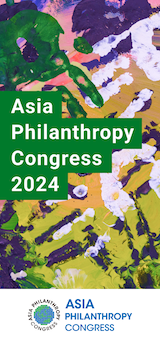Over the past year, the Trust, Accountability, and Inclusion Collaborative (TAI) has published five funding landscapes and launched our updated dashboard on international governance funding. We share all of these publicly and frequently because these landscapes aren’t just for philanthropies – they can also benefit public funders, funder networks, non-profits, and other field actors.
How can a funding landscape be useful?
For foundations, they can help with deciding on a new area of funding, shaping existing strategies, recruiting others to co-fund, or preparing to exit space and thus leaving behind a status of funding for a field. They help identify who’s already funding what, where there might be gaps in funding, and where collaboration is possible.
Donor networks frequently use landscapes to help coordinate funders, expose gaps in knowledge about key actors, recruit new funders, or create something for a field as a shared resource. In addition, non-profits may use scans for fundraising, advocacy, and strategy development.
Using landscapes in practice
We’ll show you how even a quick scan of funding data can inform strategic decisions. We draw insights from our annual update on governance funding, built on the free and publicly available data in the Creditor Reporting System (CRS) hosted by the Organisation of Economic Co-operation and Development (OECD). The OECD collects data from bilateral donors, multilaterals, and major philanthropies. Our interactive dashboard allows for easy data manipulation to show where the money is going and more. (Unfortunately, the full data set for 2023 is not yet available.)
The top story, as highlighted by Devex, has been that governance funding jumped from more than $26 billion in 2021 to over $37 billion in 2022. For philanthropies, we caution that the topline numbers obscure the details: the increase in governance funding from 2021 to 2022 is almost entirely due to the surge in funding from the United States (US) to Ukraine. Eurodad and Development Initiatives have flagged this, as well as the increased spending related to in-country refugee expenses.
Most international philanthropic foundations do not currently work in Ukraine, and they should not assume that funding is necessarily increasing to their areas of interest even if they do. Many regions and types of work are still pressed for funds. For example, funding for democracy overall has seen funds flatline according to an analysis from the OECD. This suggests that funders may need to continue advocating for the issues they care about and supporting their grantees in their fundraising efforts.
Another key finding we’ve flagged to funders since 2020 is the significant role of loans in some of these areas like public sector management. After Ukraine, the top country recipients of funding flows in 2022 were Indonesia, Pakistan, and Mexico. However, when you dig into the data on our dashboard, you’ll see that these are largely other official flows: in these cases, loans from multilateral development banks. For funders and civil society in these countries, we advise taking a look at these loan packages to see what they include; there may be opportunities to promote participation and accountability.
For social sector organisations, knowing who the top grantmakers are can be useful. In the OECD’s data, this is tracked as private development finance (PDF). In 2022, the Ford Foundation reported over $271 million in grants in developing countries to governance and civil society support. A significant portion (over $89 million) was to ‘bilateral, unspecific’, which can be global, or cross-country work. Brazil-related work was the next highest at over $18 million. Ford’s strong funding focus was on democracy.
The Gates Foundation was another major funder and had an especially strong focus on women’s rights, which received approximately 73 percent of its over $170 million to the sector. The Oak, Hewlett, and MacArthur foundations also gave significant sums. This is important information for those planning programs in these areas or seeking funds.
From a donor network perspective, we appreciate the OECD’s data as well as the datasets from Candid, 360Giving, and the International Aid Transparency Initiative Registry. These resources show who else is funding in issues areas relevant to our members. For example, our recent funding scan on information ecosystems revealed that US-based philanthropy invested $1.3 billion in supporting information ecosystems in aid-recipient countries between 2017-2021, and the top three funders were the Gates Foundation, Open Society Foundations, and the Ford Foundation. An interesting finding was that most philanthropic funding is channelled through intermediary organisations in the Global North, primarily based in the US.
Of course, past data cannot predict the future. Several countries like Germany have announced cuts. Others like the United Kingdom have had or will have elections that may lead to changes in strategies. Philanthropies also regularly update their strategies. Some can be well anticipated, for example, MacArthur is bringing its On Nigeria program, part of its first round of ‘big bets’ to a close as planned at the end of this year.
Others are more emergent and tend to be evolutions of ongoing work as with the forthcoming update to the Ford Foundation’s Natural Resources and Climate Change strategy. At TAI, we share all updates as they are confirmed, including through our weekly newsletter, and welcome the increasing transparency in strategic planning among philanthropies (see also our guide for more participatory approaches to strategy setting).
While we’ve focused on the practical uses of this data, funding scans can be a tool for advocates looking to influence a variety of issues like conditionalities, official development assistance (ODA) commitments, and the double counting of aid and climate finance. For example, Eurodad has proposed the term ‘aid debt’ to reflect decades of missed aid commitments.
We hope our work with funding data will help others in their own work – from searching for gaps in funding for advocacy purposes to looking for partners.
Jenny Lah is an advisor at the Trust, Accountability, and Inclusion Collaborative, as well as the interim director of insights at Keseb.






Comments (0)